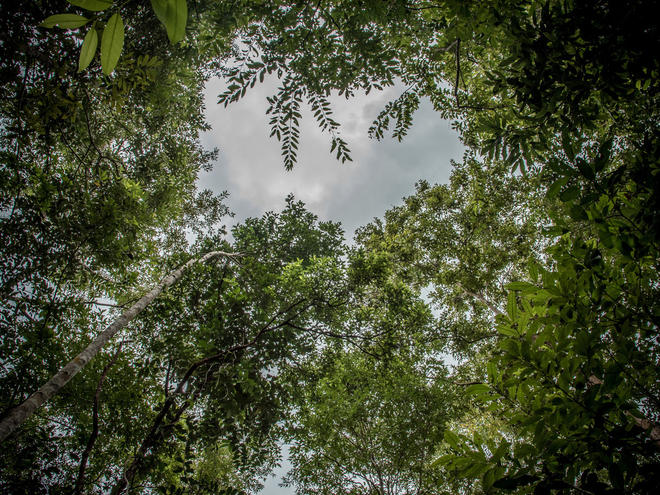Pruitt’s Actions to Block Sound Science will Hurt American Families
On April 24, EPA Administrator Pruitt announced a new policy limiting the use of many scientific studies, but EPA has[…]
Read moreDedicated To People, The Planet, and All Its Inhabitants – Since 1996

On April 24, EPA Administrator Pruitt announced a new policy limiting the use of many scientific studies, but EPA has[…]
Read more23 April, 2018 – The northern ocean is abuzz with life, but the composition of those high Arctic species is changing as the world gets warmer.
The post High Arctic species respond to climate warming appeared first on Climate News Network.
Read morePhnom Penh, Cambodia, April 23, 2018 — After decades of seemingly irreversible decline, results from a World Wildlife Fund (WWF) and Government of Cambodia census released today show that the population of critically endangered river dolphins in the Mekong has risen from 80 to 92 in the past two years – the first increase since records began more than twenty years ago.
Effective river patrolling by teams of river guards and the strict confiscation of illegal gillnets, which accidentally trap and drown dolphins, are the main reasons for this historic increase. Over the past two years 358 km of illegal gillnets – almost double the length of the dolphins’ remaining home range – have been confiscated from core dolphin habitat.
“After years of hard work, we finally have reason to believe that these iconic dolphins can be protected against extinction – thanks to the combined efforts of the government, WWF, the tourism industry and local communities,” said Seng Teak, Country Director, WWF Cambodia. “The tour boat operators are the secret ingredient in this success story as they work closely with law enforcement to report poaching and help confiscate illegal gillnets.”
The first official census in 1997 estimated that there were 200 Irrawaddy dolphins in the Mekong, a figure that fell steadily due to bycatch and habitat loss until there were only 80 left in 2015. But now the decline appears to be on the mend.
Along with the 10 percent increase in dolphins, the surveys also point toward encouraging signs for the long-term health of the population, with an improvement in the survival rate of dolphins into adulthood, an increase in the number of calves and a drop in overall deaths. Two dolphins died in 2017 compared with nine in 2015, while nine new calves brought the number of dolphins born in the past three years to 32.
“River dolphins are indicators of the health of the Mekong River and their recovery is a hopeful sign for the river and the millions of people who depend on it,” said Teak. “We celebrate this good news, but now is not the time for complacency. As threats to their survival persist, we need to re-double our efforts to protect the dolphins both for their future and that of the river and communities that live alongside it.”
“The Mekong dolphin is considered our country’s living national treasure and the results of this census reflect our many years of continuous efforts to protect this species,” said His Excellency Eng Cheasan, Director General of Fisheries Administration, Ministry of Agriculture, Forestry and Fisheries. “We will continue our conservation efforts to rebuild its population by eliminating all threats to the survival of this species.”
The surveys covered 190 km of the main channel of the Mekong River from Kratie in Cambodia to the Khone Falls complex in Laos. Surveys were done in both directions with teams photographing dolphins and comparing the distinctive marks on their backs and dorsal fins against a database of known dolphins.

It’s one of the easiest things you can do to help save the world’s forests. Look for the label that says FSC when you buy paper towels, tissues, furniture or any other products that come from forests.
Read moreLouisiana’s Natural Resource Damage Assessment (NRDA) Trustee Implementation Group (TIG) released a final restoration plan outlining priorities to repair damages[…]
Read moreThere are few things that connect the human race as acutely as water. We all need it – to drink, to wash, to heal, to do just about anything. But we also all impact it. Water is the ultimate shared resource – what we dump into a ri…
Read moreA peer-reviewed scientific study shows that oil and gas methane emissions were 15 times higher than what industry reported in[…]
Read moreIt’s the second-worst winter for sea ice in the Arctic, according to new data released by National Snow Ice Data Center scientists—the crescendo of a winter packed with environment-changing temperatures. Ice covered only an estimat…
Read more23 March, 2018 – Despite ambitious plans to improve renewable energy and water supplies, Morocco looks likely to be badly affected by North Africa’s rising heat.
The post Morocco awaits a thirsty future appeared first on Climate News Network.
Read moreNew direct emissions data from oil and gas fields in Alberta should be a warning to regulators in Ottawa and[…]
Read more